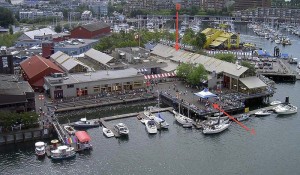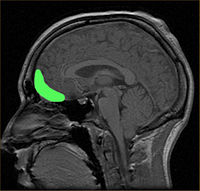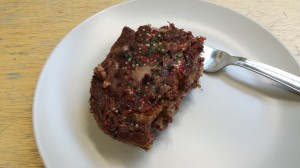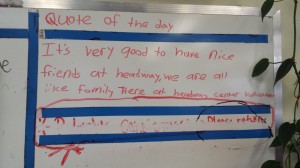I am going to start by saying that I had some pre-conceived ideas of how I thought someone with TBI would act, many of which did not prove to be true. This seminar put me in this state of mind where I pictured every individual with TBI in a non-communicative and vegetative state. Throught the class we talked about mild and moderate TBI, which I know are less severe, nonetheless I was stuck on this idea that it would be tough to interact and communicate with the members.
I was apprehensive about my visit, but this tension quickly melted after the members and volunteers warmly introduced me to their space. During the first 30 minutes of my stay, there was only one member at the center. This allowed me a unique opportunity to simply chat with the member in the kitchen while enjoying a cup of coffee. The member was extremely positive, and full of practical advice. I had some an idea in my head that I would be the leader, role model and helper, but this was far from the truth. Member X, ending up being the role model, giving me advice on topics ranging from traveling, to post-graduate choices. This woman let me into her life, showing me pictures of her Children and grandchildren just as any proud grandmother would.
I chose to participate in the Yoga class due to my interest in physiotherapy and exercise in general. It turns out yoga is not the “in” thin to do at headway. It ended up being just one member and myself being lead by an adaptive yoga teacher. The activity itself was very calming; all of the stretches were done in a chair, with a focus on ridding your body of stress while concentrating on deep breathing. During my research for my presentation it became evident that there is lack of exercise and activity opportunities for TBI survivors, so it was awesome to be able to experience and benefit from one of the existing programs. I would advise everybody against the yoga sessions for the simple fact that yoga is entirely about “yourself”, which gives you little opportunity to interact with the members. Nonetheless, Adaptive yoga was a fun and positive learning experience.
I had the opportunity to chat with other members following the yoga session, during this time it became evident that headway was truly a “hangout”. The differences in presentation of disability became evident to me during my remaining time, but regardless of differences in impairment, everybody was there for the Headway community. It was an awesome opportunity to be welcomed into such a unique space, and I cant wait to go back and “hangout”.







